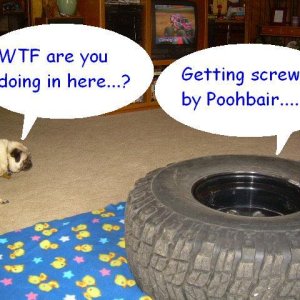altfuel1991
Well-Known Member
- Joined
- Mar 28, 2010
- Messages
- 271
I have had quite a few inquiries lately about the proper setting for timing a propane engine so I am posting this to help anyone that needs this info. I also attached it as a document that can be downloaded.
Setting Timing for a Propane Engine
On most applications, the timing should be a total of 30 degrees(base and centrifugal) with all of it in by 2500 rpm. What we normally do is disconnect the vacuum advance, run the engine up to 2500 rpm, set the timing at 30, lock it down, then let it idle with the vacuum advance disconnected. See what your base timing is running. If it is low,4-10 degrees for example, you can alter the centrifugal to lower that number and increase the base, still keeping a total of 30 degrees. As you increase the base timing check to see if the engine spins and starts smoothly when hot. If you reach a point that the engine bucks or loads the starter, back off about 3-4 degrees and that is your base timing. Subtract that number from 30 degrees and that will be the advance you need to have. This will provide a good start, strong idle and proper advance curve. We have had some engines run as much as 20 degrees base timing but 14-16 degrees is normal. The vacuum advance should be connected to ported vacuum and have no more than 10 degrees. This helps fuel economy at light throttle positions.
__________________
Propane Systems: Buddy: 877-403-7827
www.alternatefuel.com [email protected]
Setting Timing for a Propane Engine
On most applications, the timing should be a total of 30 degrees(base and centrifugal) with all of it in by 2500 rpm. What we normally do is disconnect the vacuum advance, run the engine up to 2500 rpm, set the timing at 30, lock it down, then let it idle with the vacuum advance disconnected. See what your base timing is running. If it is low,4-10 degrees for example, you can alter the centrifugal to lower that number and increase the base, still keeping a total of 30 degrees. As you increase the base timing check to see if the engine spins and starts smoothly when hot. If you reach a point that the engine bucks or loads the starter, back off about 3-4 degrees and that is your base timing. Subtract that number from 30 degrees and that will be the advance you need to have. This will provide a good start, strong idle and proper advance curve. We have had some engines run as much as 20 degrees base timing but 14-16 degrees is normal. The vacuum advance should be connected to ported vacuum and have no more than 10 degrees. This helps fuel economy at light throttle positions.
__________________
Propane Systems: Buddy: 877-403-7827
www.alternatefuel.com [email protected]










